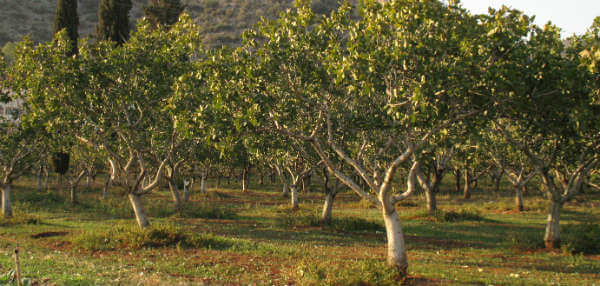Pistachio trees ‘talk’ to their neighbours, reveals statistical physics
The number of nuts on pistachio trees in any given year could be explained with a model from statistical physics that is normally used to study magnetic materials. That is according to researchers led by Alan Hastings, a mathematical ecologist from the University of California, Davis, who have used the “Ising model” to analyse the yields of pistachio trees in one particular orchard in California. Their work explains why the orchard does not always have a uniformly good crop one year followed by a uniformly bad crop the next, arguing that the patchiness in nut production in certain years is due to interactions between neighbouring trees.
It might seem odd there should be a link between pistachio trees and magnetic materials. But the statistical physics developed to understand systems like magnets or liquid–vapour transitions has been found to apply to a wide range of biological systems, from the flocking of birds to patterns of neural activity in the brain. In particular, various biological systems seem to operate close to a critical phase transition like that in iron when the spin magnetic moments switch from a disordered to an ordered orientation as it is cooled below the Curie temperature.
Close to the magnetic critical phase transition, each spin in the material becomes acutely sensitive to the orientation of the others, with their alignment exhibiting long-range correlations. Patches of aligned spins can therefore develop on all length scales from just a few neighbours to the entire system, making the patches “scale-invariant”.
Critical behaviour might be useful in biological systems because it leads to extreme sensitivity to external influences, with the long-range correlations meaning that a small disturbance can spread rapidly through a system. The system therefore has access to many different configurations and will not get trapped in a particular arrangement. Indeed, biological systems might deliberately sit close to critical points to benefit from this responsiveness – a flock of animals, for example, could then quickly adapt to the presence of a predator. [Continue reading…]
